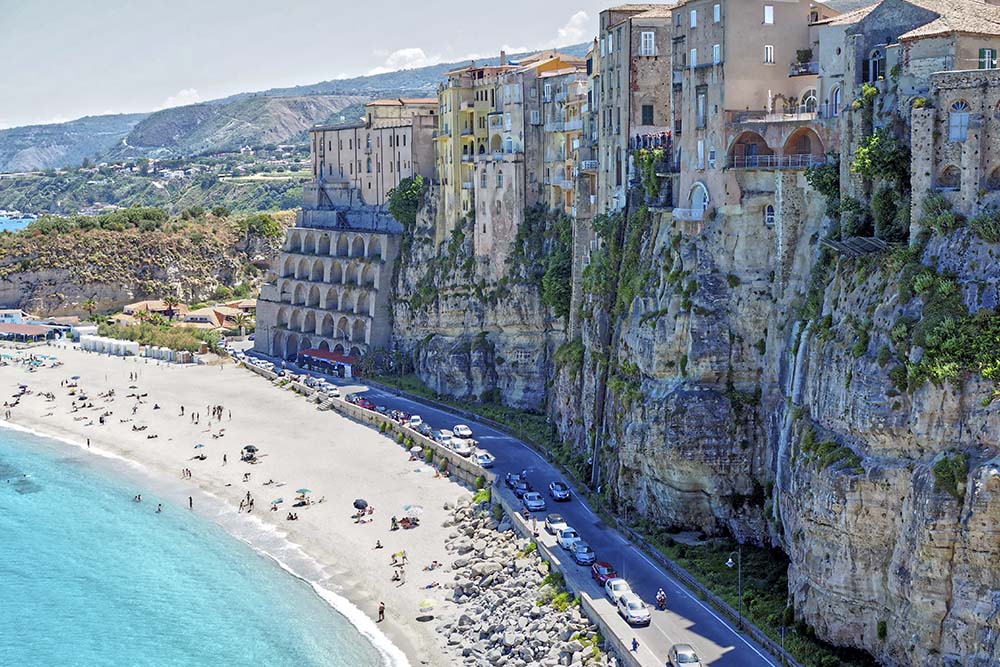Aeolians Islands, Italy
- Home
- /
- Destinations
- /
- Mediterranean
- /
- Aeolians Islands, Italy
Aeolians Islands, Italy
REVIEW
The Aeolian Islands belong to the province of Messina, Sicily, off the coast of Milazzo, comprising seven islands: Lipari (the capital), Alicudi, Filicudi, Panarea, Salina, Stromboli, and Vulcano.
TIPS
- Visit Tropea, known for its magnificent white sandy beaches accompanied by cliffs. Much of its original architecture dates back to the 16th century and remains mostly intact to this day.
- Don’t miss Taormina, known for the Teatro Antico di Taormina, an ancient Greco-Roman theater still in use today. Near the theater, there are cliffs that form coves with sandy beaches.
- Also, make sure to visit Siracusa, known for its ancient ruins. The central archaeological park of Neapolis includes the Roman amphitheater, the Greek Theater, and the Ear of Dionysius, a limestone cave shaped like an ear.
- We recommend adding 2 or 3 nights to the boat itinerary to explore both Taormina and Siracusa.
ITINERARY (7 days)
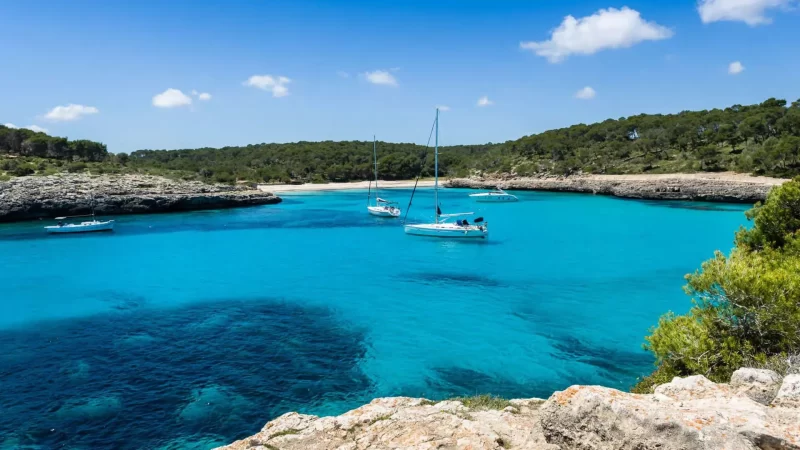
DAY 1 – Capo d’Orlando, Portorosa or Milazzo
We start from the Marina di Capo d’Orlando, Portorosa, or Milazzo, sailing on the first day to the island of Vulcano, Baia Del Gelso.
A bay that seems out of time, with black sand beaches and crystal clear purple water, surrounded by wild nature of prickly pears, capers, and wild goats that love to come down to the water.
The island is formed by four volcanoes, but only one is active; the last eruption was in 1888 and lasted for four years. There are still volcanic manifestations in the area.
DAY 2 – Vulcano Island
Vulcano Island offers the opportunity to bathe in the famous “Pozza” thermal pool located a few steps from the harbor, continuously fed by countless bubbles releasing sulfurous vapors, brackish water, and clayey mud. The next stop on the itinerary, the Aeolian Islands, can be reached with a short sail. We recommend visiting the characteristic village of Marina Corta, the castle, the Norman cathedral, and the archaeological museum. Lipari is the largest of the seven Aeolian Islands and has been a crossroads of the Mediterranean since prehistoric times.
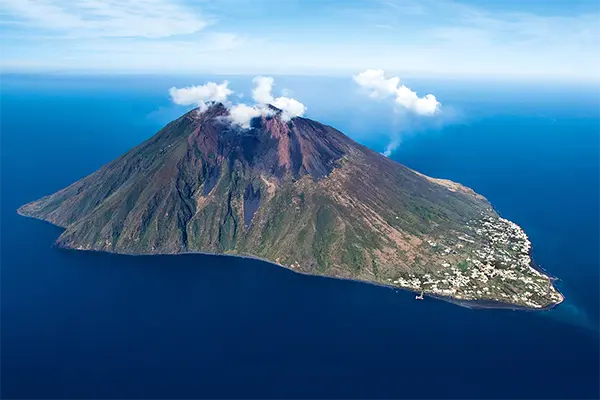
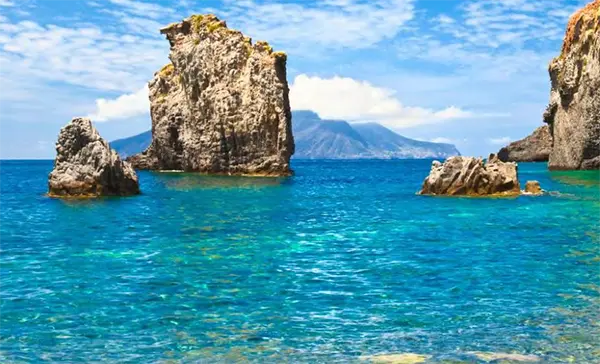
DAY 3 – Island of Panarea
Sail to the island of Panarea, which has become a haven for VIPs. The international jet set gathers every year on this small and charming island with its white and blue alleyways. It has been inhabited since prehistoric times. At the southern end of the island, on the promontory of Punta Milazzese, a prehistoric village dating back to the Bronze Age was found. Take a stroll through the characteristic alleys of Panarea, undoubtedly the most exclusive and trend-setting island. Enjoy a seaside walk in its crystal-clear waters among islets and underwater sulphates since Panarea itself is a small archipelago of islets such as Basiluzzo, Spinazzolla, Panarelli, Lisca Blanca, Lisca Nera, Bottaro, and the group of Fórmica.
DAY 4 – Stromboli
Stromboli, according to legend, was chosen as the dwelling place by the god Aeolus, and the color of some areas of the island confirms the exact poetic image of Homer. Certainly, the crater’s explosions were one of the most well-known beacons in ancient times for anyone sailing the Tyrrhenian Sea. One of the most fascinating events on the island is undoubtedly the Sciara del Fuoco, the lava flow descending into the sea. The volcanic explosions with a jet of incandescent lapilli to great heights that illuminate the sky red, occur year-round and never disappoint anyone.
It is possible to climb to the top of the crater (about a 3-hour hike, highly recommended) where you can admire the continuous explosions, located not far from the trail, and it’s good to be accompanied by a guide. Stromboli also offers very characteristic villages where it’s nice to walk immersed in an absolutely suggestive atmosphere.
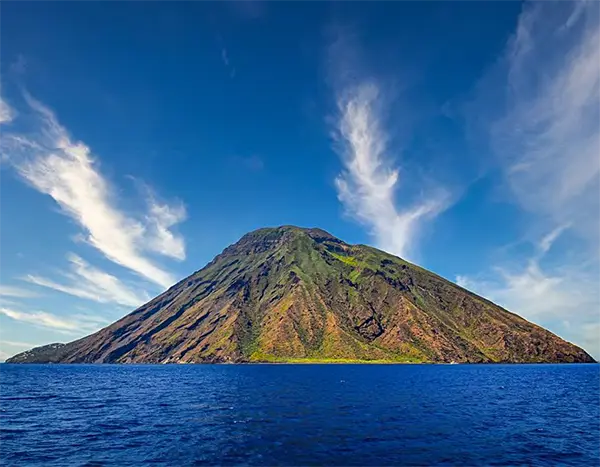
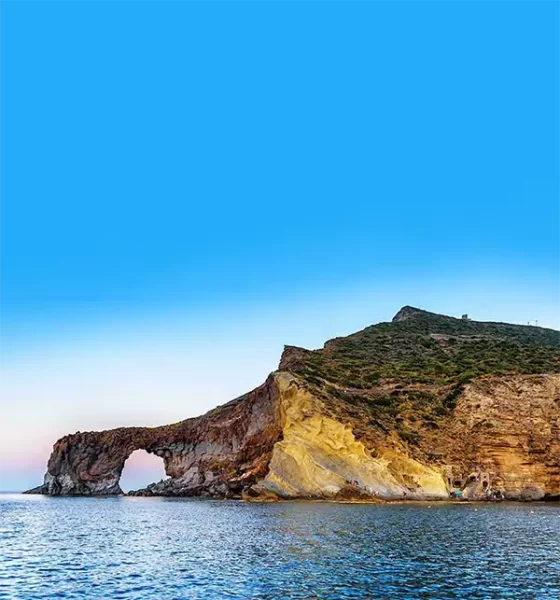
DAY 5 – Isola di Salina
The name Isola di Salina derives from a saltwater pond located in the southern part of the island, which was once used as a saltworks. The island is essentially composed of two ancient volcanoes. In ancient times, it was called Dydime, “the double,” precisely because of this characteristic. We suggest exploring the northern coast with the characteristic village of Malfa and stopping for a swim in the splendid landscape of Pollara Bay, where the movie “Il Postino” was filmed.
In the evening, head to the characteristic villages of Santa Marina and Lingua, where you can taste the best granita (semi-frozen, creamy, refreshing, and sandy dessert) in the Aeolian Islands. The island is also famous for the production of excellent local wines, and it’s possible to organize visits and tastings at the wineries. In the waters around Salina, it’s easy to encounter cetaceans, dolphins, and turtles.
Granita is a true institution in the Sicilian area and according to tradition is part of breakfast (previously served with fresh crispy bread and now replaced by a delicious locally known brioche called tuppu). You can enjoy it at any time of the day, sitting in the shade, on the beach, or during a cool evening stroll through the town center.
DAY 6 – Filicudi & Alicudi
Filicudi and Alicudi, the wild heart of the Aeolian Islands. Even today, these islands feel like remote places, even for the inhabitants of Lipari. In fact, what makes them feel distant is not so much the distance but something deeper: it’s a distance in time, in the way of being of the island and its people, it’s the distance from the common world. Stops for swimming before and after lunch at the most characteristic points of these wonderful islands, with a visit to the suggestive Grotta del Bue Marino, with unbeatable blue water.
The ebb of the sea and the whisper of the wind over the vegetation are the only sounds you’ll hear on Alicudi. Given the particular terrain, there are no roads or paths for transportation. To face the lava stone staircases that ascend everywhere, one relies on their feet and on the friendly donkeys or mules bred on the island, which carry the weight of goods and luggage from the port to the houses scattered along the slope.
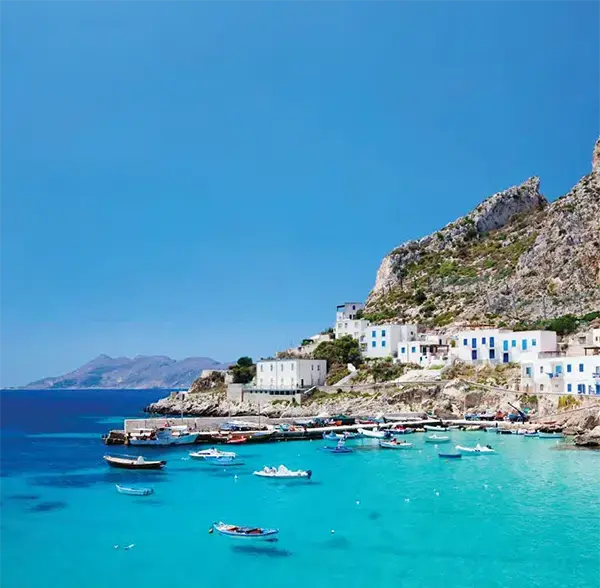
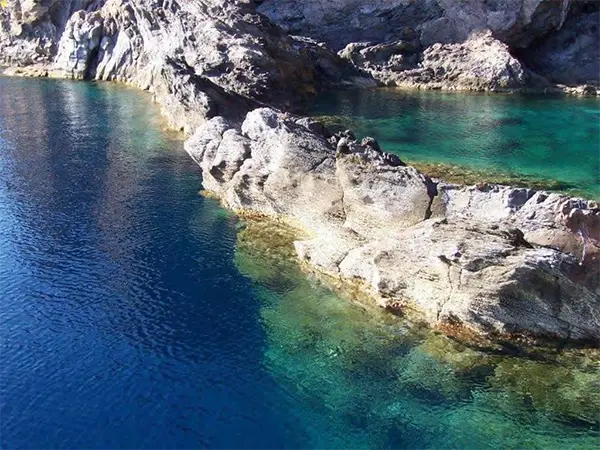
DAY 7 – Pool of venus
Return to Capo d’Orlando exploring and stopping at the most beautiful bays on the west coast of Filicudi, Lipari, and Vulcano. Finish your journey with a swim in the “Pool of Venus,” an absolutely magical place.
Return to the marina. Check out at 9:00 am in Capo d’Orlando.

Maritimes conditions
General conditions
Summer weather in the Mediterranean is warm and dry, while winters are mild and humid. The distance to the sea and the height of the largest mountains are the causes of climate differences: along the coast, the average annual temperature is around 19°C, dropping to 13°C further inland. Precipitation is mainly limited to the winter months, and it is generally low, especially in low-lying areas around Catania and Gela, with prevailing northwest winds. From June to August, wind strength averages 20-25 knots, very rarely more.
Tides
The tidal range within the harbor is less than 1 foot (0.3 meters).
Weather Forecast
The customer can get the weather situation at any time by listening to marine weather forecasts. Weather updates are provided every hour during severe weather.
